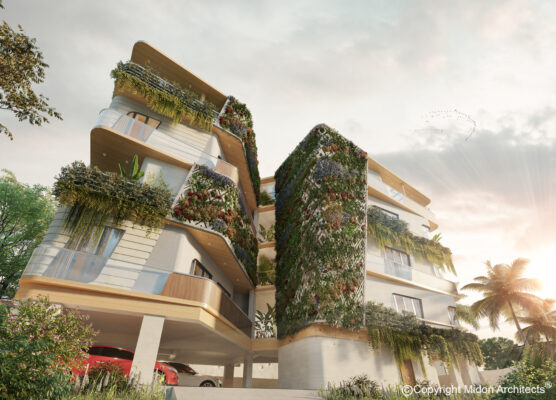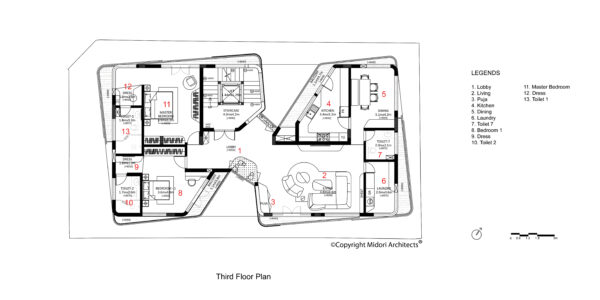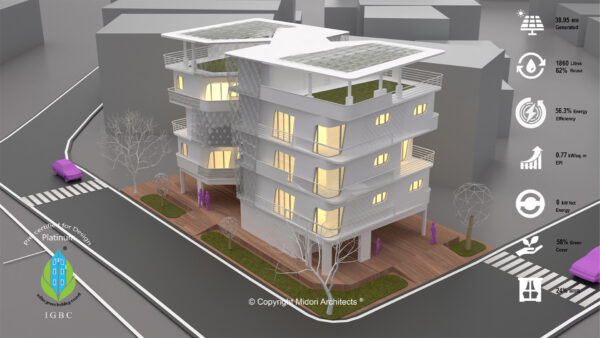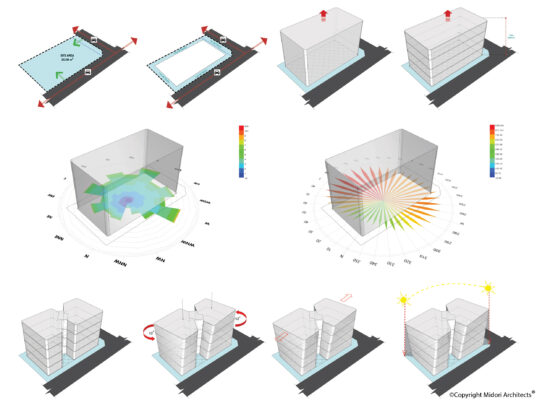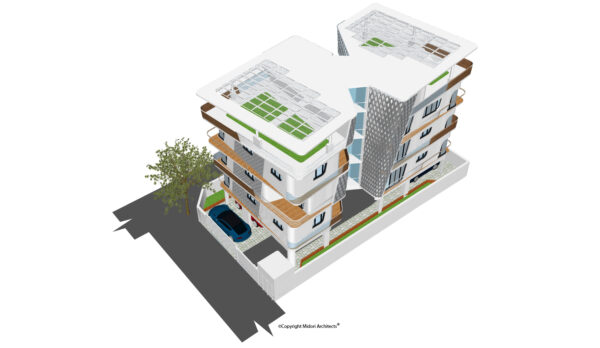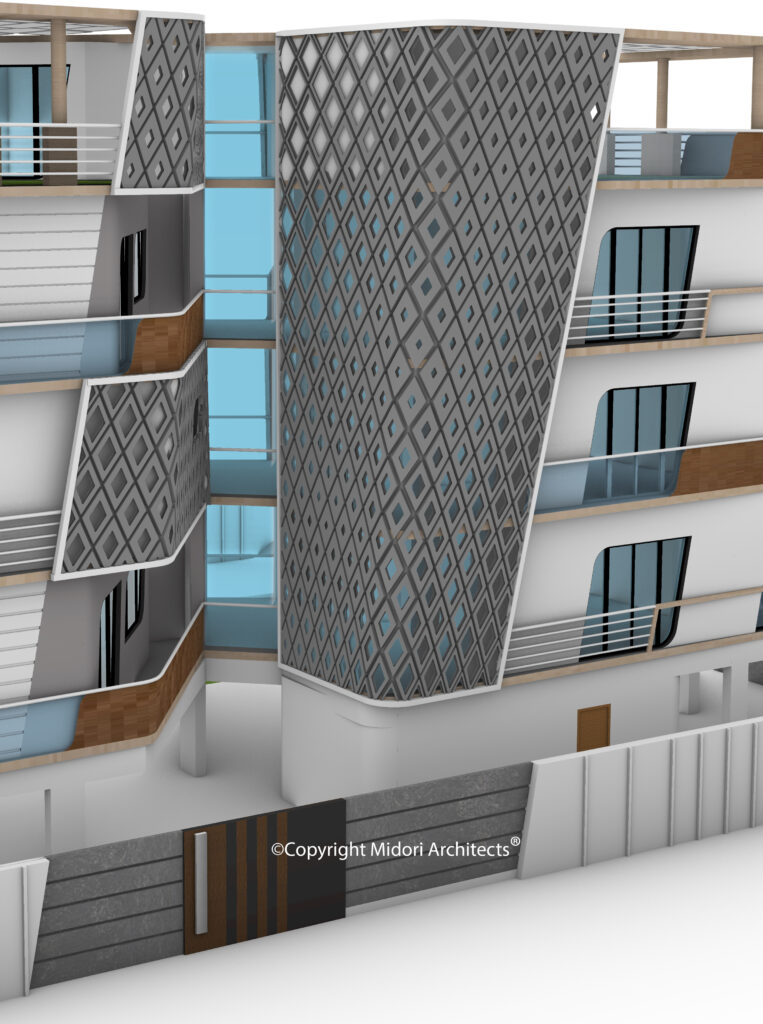Bhawar Residence
Chennai, Tamil Nadu
Ventilation Design
By utilizing aerodynamic forms, the massing of the building was optimized to enhance natural ventilation and reduce heat gain from solar radiation. The floor plates were rotated by 12 degrees clockwise to enhance the venturi effect in the central atrium, while transitional spaces such as terraces and lobbies were designed to allow indirect sunlight indoors.
To facilitate smooth wind movement, the corners of the building were curved with a radius of 500mm. The lobby, created by breaking the straight wall and acting as a bridge between the two sides of the house, serves as a ventilation mechanism. Perforated screens with vegetation incorporated on all four facades create a reverse venturi effect that enhances air velocity. These design elements ensure a constant airflow of 0.625 m/s even with outdoor wind velocities as low as 0.7 m/s.
Daylight
The residence has been deliberately designed with a central atrium, ensuring ample daylight in all regularly occupied areas. To optimize the natural light while minimizing glare, windows are strategically placed on all four facades.
Approximately 99 percent of the building experiences illuminance levels exceeding 110 lux on a typical day. The building incorporates glass with a Visible Light Transmission (VLT) of 42 percent, a U-Value of 1.6 W/m2K, and a Solar Heat Gain Coefficient (SHGC) of 0.29.
Landscaping
The project prioritizes maximum green coverage for the site and building. The green cover represents 58 percent of the total site area. Of the open area on site, 35 percent is soft-paved using perforated grass cells to enhance greenery. Spider lilies and white lantanas contribute to the ground-level green cover.
The landscape features drought-tolerant vegetation like spider lily, lantana, jasminum polyanthum, vernonia creeper, and adenium. The vertical green wall panels (shading the balconies) use 100 percent recycled hydrophilic felt. Indoor plants are grown in a soilless mix of perlite, cocopeat, and vermicompost (2:1:1 ratio) at 27 plants/sq.m.
Facade and Envelope
The façade of the building is covered in zinc panels. Zinc is a very resistant material averse to corrosion and dust. This facilitates maintenance and upkeep while ensuring durability.
Water Management
Rainwater from all roofs and non-roof structures is collected for use and ground water recharge. Treated greywater is used for landscape irrigation. Water-efficient plumbing fixtures and flow regulators are used to reduce water consumption. Water metering is implemented to monitor usage.
Materials
Approximately 33 percent of the materials have recycled content. 75 percent of the wood utilized is either rapidly renewable or certified by the Forest Stewardship Council (FSC). 50 percent of the overall building materials are manufactured and sourced locally (within a 400 km radius).

